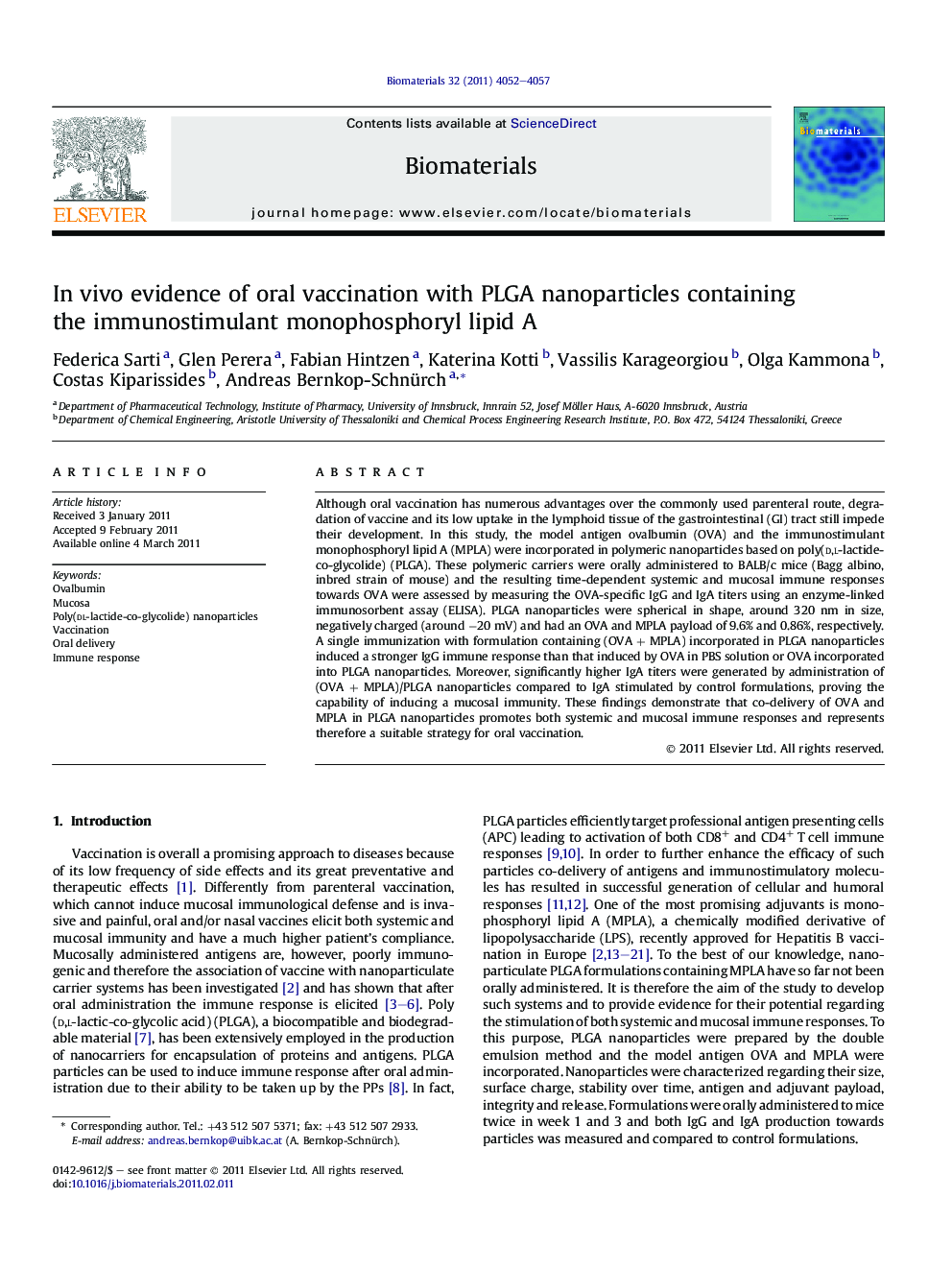| Article ID | Journal | Published Year | Pages | File Type |
|---|---|---|---|---|
| 7990 | Biomaterials | 2011 | 6 Pages |
Although oral vaccination has numerous advantages over the commonly used parenteral route, degradation of vaccine and its low uptake in the lymphoid tissue of the gastrointestinal (GI) tract still impede their development. In this study, the model antigen ovalbumin (OVA) and the immunostimulant monophosphoryl lipid A (MPLA) were incorporated in polymeric nanoparticles based on poly(d,l-lactide-co-glycolide) (PLGA). These polymeric carriers were orally administered to BALB/c mice (Bagg albino, inbred strain of mouse) and the resulting time-dependent systemic and mucosal immune responses towards OVA were assessed by measuring the OVA-specific IgG and IgA titers using an enzyme-linked immunosorbent assay (ELISA). PLGA nanoparticles were spherical in shape, around 320 nm in size, negatively charged (around −20 mV) and had an OVA and MPLA payload of 9.6% and 0.86%, respectively. A single immunization with formulation containing (OVA + MPLA) incorporated in PLGA nanoparticles induced a stronger IgG immune response than that induced by OVA in PBS solution or OVA incorporated into PLGA nanoparticles. Moreover, significantly higher IgA titers were generated by administration of (OVA + MPLA)/PLGA nanoparticles compared to IgA stimulated by control formulations, proving the capability of inducing a mucosal immunity. These findings demonstrate that co-delivery of OVA and MPLA in PLGA nanoparticles promotes both systemic and mucosal immune responses and represents therefore a suitable strategy for oral vaccination.
